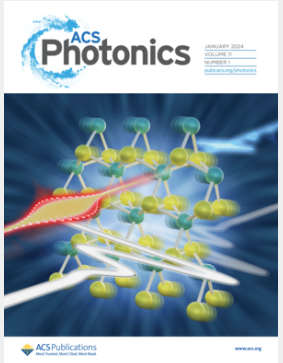利用光捕获辅助二次谐波产生和激光诱导等离子体的高灵敏度生物气溶胶检测:协同表面和内部分析
IF 6.5
1区 物理与天体物理
Q1 MATERIALS SCIENCE, MULTIDISCIPLINARY
引用次数: 0
摘要
激光探针在生物气溶胶中具有巨大的潜力,激光诱导等离子体探针(LIPP)是生物气溶胶实时检测的基础,使气溶胶物种信息的追踪成为可能。然而,由于气溶胶的微弱信号及其对干扰的敏感性,激光探针的命中率和准确性较低。具体来说,LIPP通过分解气溶胶来获得元素信息,而忽略了其固有的表面信息。本文利用光捕获辅助二次谐波产生(SHG)来研究少量气溶胶。结果表明,光学捕获可以有效地控制气溶胶的数量,从几十个到单个颗粒。测定了反式-4-[(4-二甲氨基)苯乙烯基]-1-甲基碘化吡啶分子在生物气溶胶表面的吸附自由能。此外,光学捕获辅助LIPP检测了生物气溶胶中的主要元素(K, Ca, Na和Mg)。分析等离子体的同源异质信息(光谱、声音(激波图像)和等离子体图像),并对多个信号进行互补校正,提高LIPP分析的分类精度。最后,为了加强LIPP和SHG数据挖掘,我们提出了一个人工智能驱动的自适应多模态注意力融合网络,将13种生物气溶胶的分类准确率从83%提高到96%。这项工作建立了一个高灵敏度的激光探针检测平台,可以协同分析表面吸附和内部元素成分,为未来的单一生物气溶胶检测和报警系统铺平了道路。本文章由计算机程序翻译,如有差异,请以英文原文为准。

High-Sensitivity Bioaerosol Detection via Optical Trapping-Assisted Second Harmonic Generation and Laser-Induced Plasma: Synergistic Surface and Internal Analysis
Laser probes have tremendous potential in biological aerosol, and laser-induced plasma probes (LIPP) underpin the recent development of real-time biological aerosol detection, enabling the tracing of aerosol species information. However, laser probes suffer from low hit rates and accuracy due to the weak signals of aerosols and their susceptibility to interference. Specifically, LIPP analyzes aerosols by breaking them down to obtain elemental information, often ignoring the inherent surface information. Herein, optical trapping-assisted second harmonic generation (SHG) was utilized to investigate small amounts of aerosols. The results demonstrate that optical trapping effectively controlled the aerosol count, from a few tens to single particles. Additionally, the adsorption free energy of trans-4-[(4-dimethylamino)styryl]-1-methylpyridinium iodide molecules on the bioaerosol surface was determined. Furthermore, optical trapping-assisted LIPP detected principal elements (K, Ca, Na, and Mg) in the bioaerosol. The homologous heterogeneous information (spectra, sound (shock wave images), and plasma images) of the plasma was analyzed, and multiple signals were complementarily corrected to enhance the classification accuracy of LIPP analysis. Finally, to enhance LIPP and SHG data mining, we proposed an artificial intelligence (AI)-driven adaptive multimodal attention fusion network, which improved the classification accuracy of 13 bioaerosols from 83% to 96%. This work establishes a highly sensitive laser probe detection platform that synergistically analyzes surface adsorption and internal element components, paving the way for future single-bioaerosol detection and alarm systems.
求助全文
通过发布文献求助,成功后即可免费获取论文全文。
去求助
来源期刊

ACS Photonics
NANOSCIENCE & NANOTECHNOLOGY-MATERIALS SCIENCE, MULTIDISCIPLINARY
CiteScore
11.90
自引率
5.70%
发文量
438
审稿时长
2.3 months
期刊介绍:
Published as soon as accepted and summarized in monthly issues, ACS Photonics will publish Research Articles, Letters, Perspectives, and Reviews, to encompass the full scope of published research in this field.
 求助内容:
求助内容: 应助结果提醒方式:
应助结果提醒方式:


